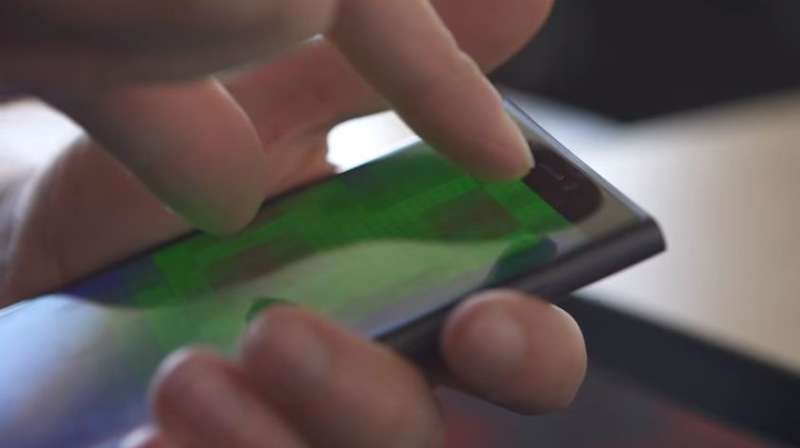Fingers pounding away on a screen, cloths wiping away at the smudges as a result…looks as if we are due for a better future in touchscreen technology. At Microsoft Research, a research team has a shared vision of what their own next chapter could be like, as they explore human interactions –retrieving and manipulating information—using the sense of touch.
Their focus is on a "pre-cognitive" phase of research for mobile device interactions. The idea," said Abhimanyu Ghoshal in The Next Web, "is that you should be able to control apps, browse through content and adjust settings simply by gliding your fingers over the screen, without actually touching it."
A video from Microsoft Research about "pre-sense sensing for mobile interaction" was posted in late April and it shows in detail what kinds of interactions would be possible in moving fingers, under the Microsoft Research concept. "New research uses a mobile phone's ability to sense how you are gripping the device, as well as when and where the fingers are approaching it, to adapt interfaces on the fly," said the video's notes.
Matt Weinberger, Business Insider technology reporter, thought that this "pre-cognitive" touchscreen project was very cool. Fundamentally, they are looking at a "phone that can sense when your fingers are nearby and display the controls you need, right when you need them," he said. It can sense ahead of time when and where your finger is about to touch the screen.
We may be moving up a notch from a smudge-centric phase of touchscreen discomfort. A Microsoft Research blog posting said, "Imagine a mobile device that intelligently anticipates your intended action even before you touch the screen. That's what's being presented in Pre-Touch Sensing for Mobile Interaction. Ken Hinckley, a principal researcher at Microsoft who led the project, said the research is based on a whole different philosophy of interaction design."
Hands become a window to the mind, Hinckley said. With this concept, interfaces are tailored to the specific context of how you are holding or using your phone.
John Brownlee in Fast Company said the concept involves a special kind of touchscreen that can sense the electrical disruption caused by a finger approaching the glass, as well as pressure sensors around the edge of the device.
Brownlee added, "because this smartphone could detect how it is being held, it could also figure out which hand a finger belongs to. If you were using your phone one-handed, Microsoft's pre-touch sensing might present a very different interface than if you were gripping it with two hands."
When can we start using this mode of interaction? Abhimanyu Ghoshal in The Next Web: "There's a long way to go before you see this on a smartphone, as it's still in the research phase."
At the same time, though, Ghoshal said he would not be surprised "to see it become a priority for the company in the coming months."
Brownlee called it "a fantastic demonstration" but "there's no telling whether or not this smartphone will ever come out of the prototype phase."
© 2016 Tech Xplore























